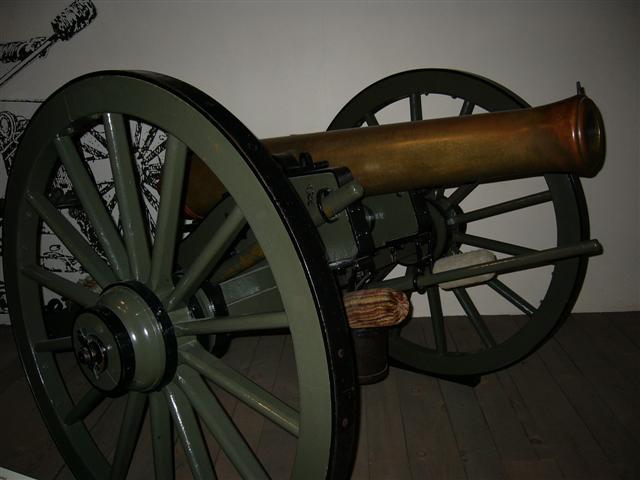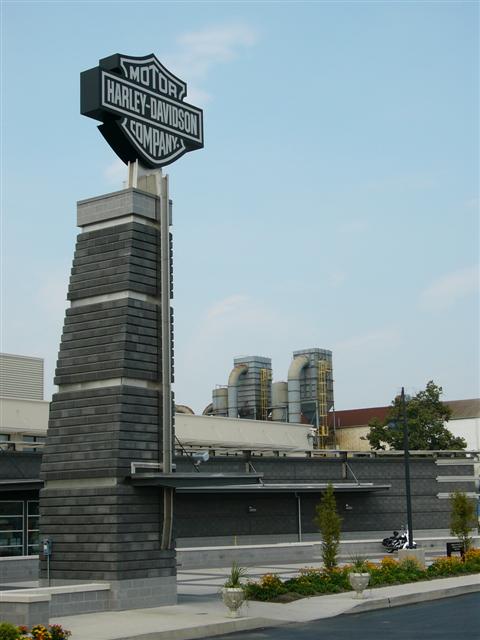Four days on the Chesapeake
30 Jul 2003Well I found myself out of work and was long overdue to visit Mom. I hadn t seen Mom for three years; she d been living in Sarajevo and was home for the summer long enough to study French in preparation for her move back across the pond to Paris. I, Mom, and the rental car made a point of exploring the amazing and historically rich areas around her home on the Chesapeake Bay.
Day 1: Havre De Grace, Maryland
The first day we explored nearby Havre de Grace. Apparently the town s biggest attraction is the Decoy Duck museum. Not much of a waterfowl predator myself I opted to explore the other facets of this charming small town. One small treasure I found here was the local lighthouse. The Havre de Grace Lighthouse is the oldest lighthouse in continuous operation in the United States. It was built in 1827 and has been running ever since. It was maintained by one family, the O Neill s, till 1928. John O Neill, the original lighthouse keeper, was awarded the job for his valiant defense of Havre de Grace when the British overwhelmed the town in the war of 1812.
Skipjack sailing vessels can still be seen plying the waters clamming throughout the Chesapeake here. It s the law actually, to maintain the clam s stocks only vessels under sail are allowed to clam these waters.
Day 2: Newcastle, Delaware
I visited Newcastle and only after arriving did I learn my favorite beer is from England and not this charming Delaware town! Newcastle was founded in 1651 and was a thriving port town for many years. It s where the Quaker William Penn arrived to the new world. The area to the north that Penn s Quakers colonized immortalizes him with its name of Pennsylvania. The town is a picture book example of the colonial period with its cobblestone streets, brick houses, and dark taverns. Here we toured George Read the 2nd s house (no pictures please!). George had grandiose ideas and a bit of envy of his father who was a signer of the Declaration of Independence and the Constitution. George however, after building his gaudy mansion never managed to do well at anything bigger than town politics; when he died his mansion and possessions had to be sold off to pay his debts.
Day 3, Gettysburg, Pennsylvania
Next on our tour was Gettysburg, one of the key battles in the Civil War. It was the south s first incursion into the north. The battle lasted three days through the town and across the hills to the south. The confederate forces made early gains however were stalemated and driven back, finally taking such heavy losses in attempts to rout Federal forces that they were forced to retreat to the south. The closing action of the battle was Picket s Charge , one of the most famous infantry actions in history. Twelve thousand south Carolinians charged the Federal lines in an attempt to break through. They drove into fire from rifles and cannon and when they were forced back only two thousand of them remained.
One of the most widespread weapons in the civil war was the 12-pound smoothbore field gun, model 1857 nicknamed The Napoleon . This weapon was the workhorse of civil war artillery for both sides. It was capable of firing long-range cannonballs over a mile, as well as close-combat support when loaded with grape shot, akin to a shotgun blast.
On the return to Maryland we passed through York, Pennsylvania, the site of the Harley-Davidson factory. Note to visitors, it s closed Sundays, the day we happened to stop by!
Day 4, Baltimore, Maryland
On my final day we traveled to Baltimore which is the home of Ft McHenry, and the Baltimore clipper . The clippers could average 12 knots, and even maintain 10 knots in 10-15 knots of wind! These ships were not built using plans but put together on the fly and from the memories of the shipwrights.
And as our luck would have it we were greeted by a special treat entering the Baltimore Harbor; The Libertad of Argentina dressed in flags was being guided into port. Libertad is a training ship of the Argentinean Navy. Built in 1960 and with an overall length of three hundred forty feet, it is truly a sight to behold. Libertad has the transatlantic record in a ship of its category, set in 1966 and yet to be topped. She is also the eight-time winner of the Boston Teapot trophy.
Next we visited Fort McHenry, the inspiration for the National Anthem. During the war of 1812, after the British sacked Washington (and perhaps also Havre de Grace) they planned to finish off the American militia in Baltimore. The British realized the strategic importance of the fort and so the fleet bombarded the fort repeatedly with numerous attacks. In the early hours of the morning the guns fell silent. And when the sun rose over Fort McHenry the US flag continued to fly and the British thwarted had no choice but to withdrawal.
Our final stop in Baltimore was the US Constellation. Constellation was the last sailing warship built by the US navy and is now a delightful pierside museum and does a great job illustrating the workings of such a vessel.
For example we learned what the phrase able-bodied seaman really means. An ordinary seaman has only three years of experience, whereas to be an able- bodied seaman (an official designation, with the abbreviation of A.B ) you must have six years experience!













